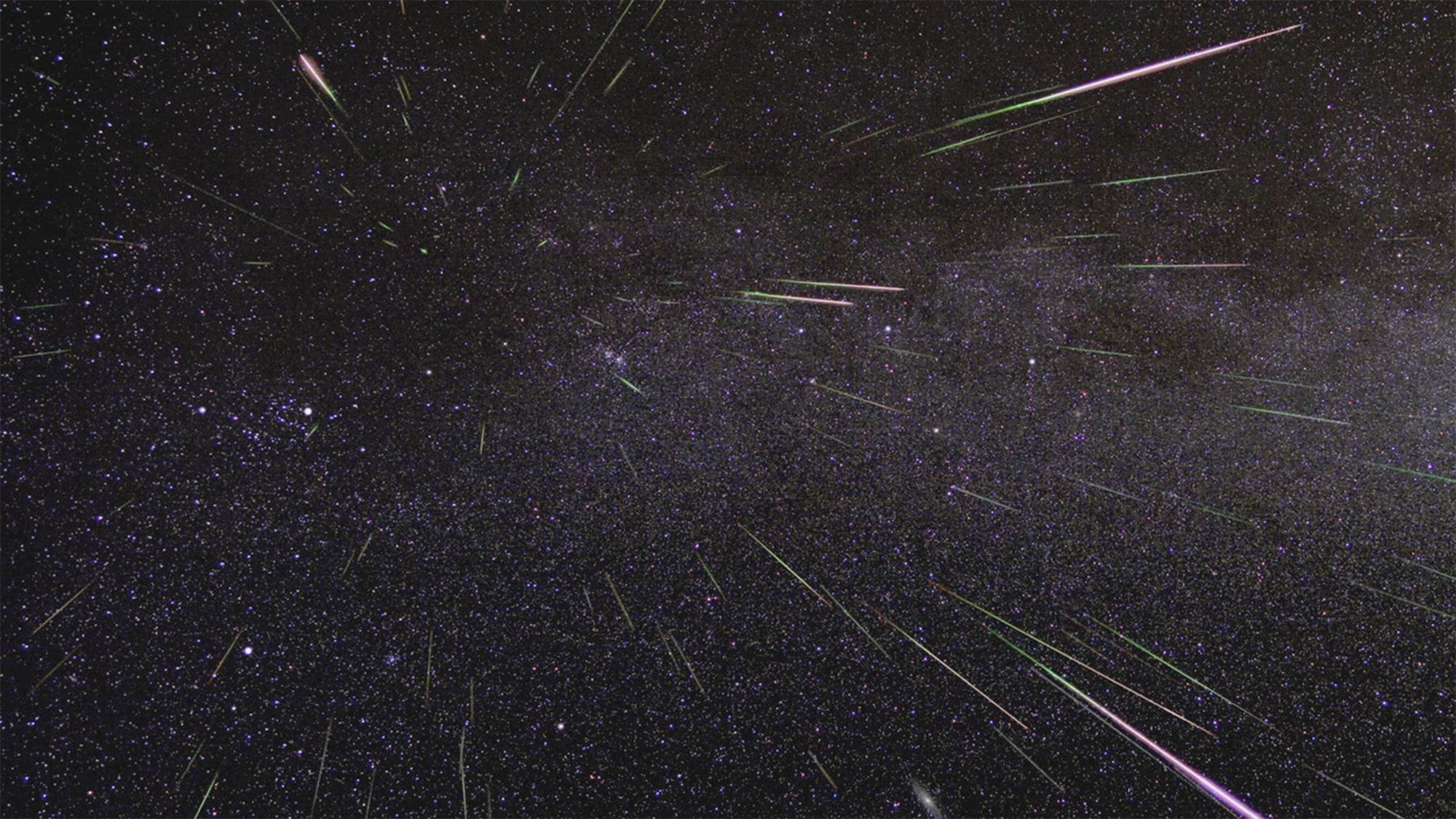

| August 1 | Full Sturgeon Supermoon |
| August 12-13 | Perseids meteor shower peaks |
| August 24 | Moon occults Antares |
| August 26 | Asteroid 8 Flora at opposition |
| August 30 | Full Blue Supermoon |
The last full month of the summer in the Northern Hemisphere is not only getting two full moons—this year, August brings two full super moons and a Blue Moon. Also expect the annual Perseids meteor shower as the midsummer night skies heat up. Here are some events to look out for. If you happen to get any stellar sky photos, tag us and include #PopSkyGazers.
[Related: The world needs dark skies more than ever. Here’s why.]
August 1: Full Sturgeon Supermoon
The first full moon of the month is the Surgeon Moon which is set to appear on the afternoon of August 1, reaching peak illumination at 2:32 p.m. EDT. As the sun sets that night, look to the southeast to see the moon rise.
The Surgeon Moon is the second of four scheduled supermoons this year. A supermoon typically exceeds the disk size of an average-sized moon by up to 8 percent and is about 16 percent brighter than the average moon.
The name Sturgeon Moon refers to the time of year when the giant sturgeon of the Great Lakes and Lake Champlain were most frequently caught. Additional names for August’s full moon include the Corn Moon or Skumoone Neepãʔuk in the Mahican Dialect of the Stockbridge-Munsee Band of Wisconsin, the Ricing Moon or Manoominike-giizis in Anishinaabemowin (Ojibwe), and the Hot Moon or Gëdë́’ökneh in Seneca.
[Related: Lunar laws could protect the moon from humanity.]
August 12-13: Perseids meteor shower peaks
The annual Perseids meteor shower is predicted to peak around August 13. According to EarthSky, the moon will be about 10 percent illuminated during this year’s peak. Perseids rise to a peak gradually and then fall pretty quickly. They also tend to strengthen in numbers as the night turns into the early hours of the morning. Another bonus is that these meteors are often colorful.
This meteor shower is also often best seen before dawn. With a dark sky with no moon, up to 90 meteors per hour are possibly visible. This year, the light from the waning crescent moon will not interfere with Perseids.
August 24: Moon occults Antares
In this rare event, the moon will pass in front of the star Antares (Alpha Scorpii), creating a lunar occultation that is expected to be visible in Mexico, the contiguous United States, and Canada. For those in Eastern time, the occultation will begin with the disappearance of Antares (Alpha Scorpii) behind the moon at about 10:52 p.m.
This moon will be 25 days past the new moon and 57 percent illuminated. Antares (Alpha Scorpii) will disappear behind the darkest side of the moon and then reappear from behind the illuminated side.
August 26: Asteroid 8 Flora at opposition
Not to be upstaged by two moons and a beloved meteor shower, Asteroid 8 Flora will be visible in the constellation Aquarius and will be positioned well above the horizon for much of the night on August 26.
[Related: Smashed asteroid surrounded by a ‘cloud’ of boulders.]
The 91-mile in diameter Asteroid 8 Flora will reach its highest point in the sky around midnight local time wherever you are on Earth. In Eastern time, it will be visible between 10:42 PM and 3:43 AM, according to In the Sky.
Asteroid 8 Flora is the largest rock in the Flora family of asteroids and is named after the Roman goddess of flowers and gardens.
August 30: Full Blue Supermoon
The month will end with a Blue Moon, a term usually used for a month that has two full moons like this August. According to NASA, they occur once every two to three years and are not usually blue in color. Moons with a blue hue are “the result of water droplets in the air, certain types of clouds, or particles thrown into the atmosphere by natural catastrophes, such as volcanic ash and smoke,”
The Blue Moon will reach peak illumination at 9:36 p.m. EDT on Wednesday, August 30. This full moon will also be the closest, biggest, and brightest full supermoon of the year. It will be 222,043 moon miles from Earth, which is fairly close by. A full supermoon won’t be any closer until November 2025.
The same skygazing rules that apply to pretty much all space-watching activities are key this month: Go to a dark spot away from the lights of a city or town and let the eyes adjust to the darkness for about a half an hour.
